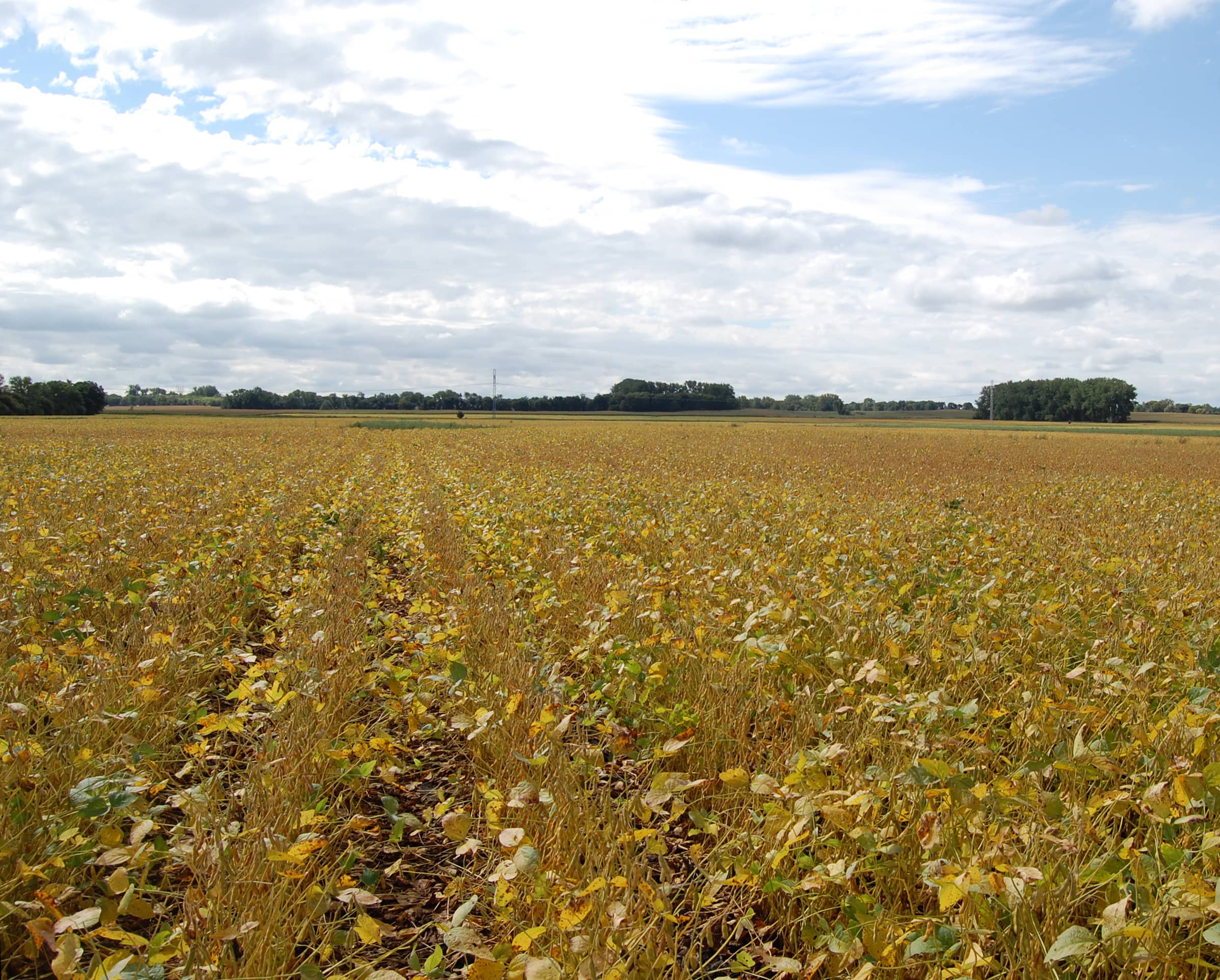
FARGO, N.D. (NDSU Extension) – An early frost has producers wondering what to do with immature frost-damaged soybeans.
“Soybeans killed at growth stages of full seed development (R6) and beginning maturity (R7) should be left out in the field to dry and harvested along with mature soybeans (R8) when the beans are at the desired moisture content,” advises Ken Hellevang, North Dakota State University Extension agricultural engineer and grain drying expert.
Weather conditions during the field drying period, after plants are frozen, impact the color of the harvested soybeans. NDSU research during 2019 found R6 soybeans that were field dried during nice weather had a significant change in the color of the seed coat. The beans developed a golden yellow tone approaching that of mature soybean (R8-control) after field drying.
However, R6 soybeans that were field dried during freezing temperatures, snow and rain, and lacked exposure to sunlight after desiccation, had a green tone to the golden color. The green is chlorophyll, which is not desirable in the oil. Removing the chlorophyll costs the processor, so the soybeans are discounted at the elevator. The elevator determines the amount of green soybeans and applies a price reduction.
Even though the bean yellow/green tone was observed after field drying, little green was seen in the extracted oil from the seeds during the 2019 study and was close to that of the mature R8-control.
“Despite the snow and rain encountered prior to harvesting of the desiccated seeds, leaving the seeds out in the field likely aided the natural ripening, causing degradation of chlorophyll pigments in the seeds,” Hellevang says.
According to a Wisconsin study in 1998, soybeans on frost-damaged plants showed quicker maturity and color change than those on undamaged plants.
Effect of Storage on Bean Quality
A study showed only a slight change in color during six months of storage for field-dried soybeans. A green tone still existed in the stored soybeans at the end of the sixth month. Researchers also saw a very small change in the chlorophyll content in the oil. However, the chlorophyll level was low after field drying, so little change was expected.
During the first year of the research, soybeans were stored at 40 and 75 F, with and without light, and with and without aeration for four months. Researchers saw a marginal increase in the yellow and dissipation of the green in all the soybeans during storage.
However, the only parameter that significantly impacted the color change in the soybeans during storage was exposure to light. The beans cannot be exposed to light in storage, so research during the second year of the study examined color change in leaving the soybeans in the field after a killing frost.
A reduction in chlorophyll occurred in all the soybeans during the four months of storage during the first year. However, the chlorophyll content of immature soybeans exceeded the level in mature soybeans.
